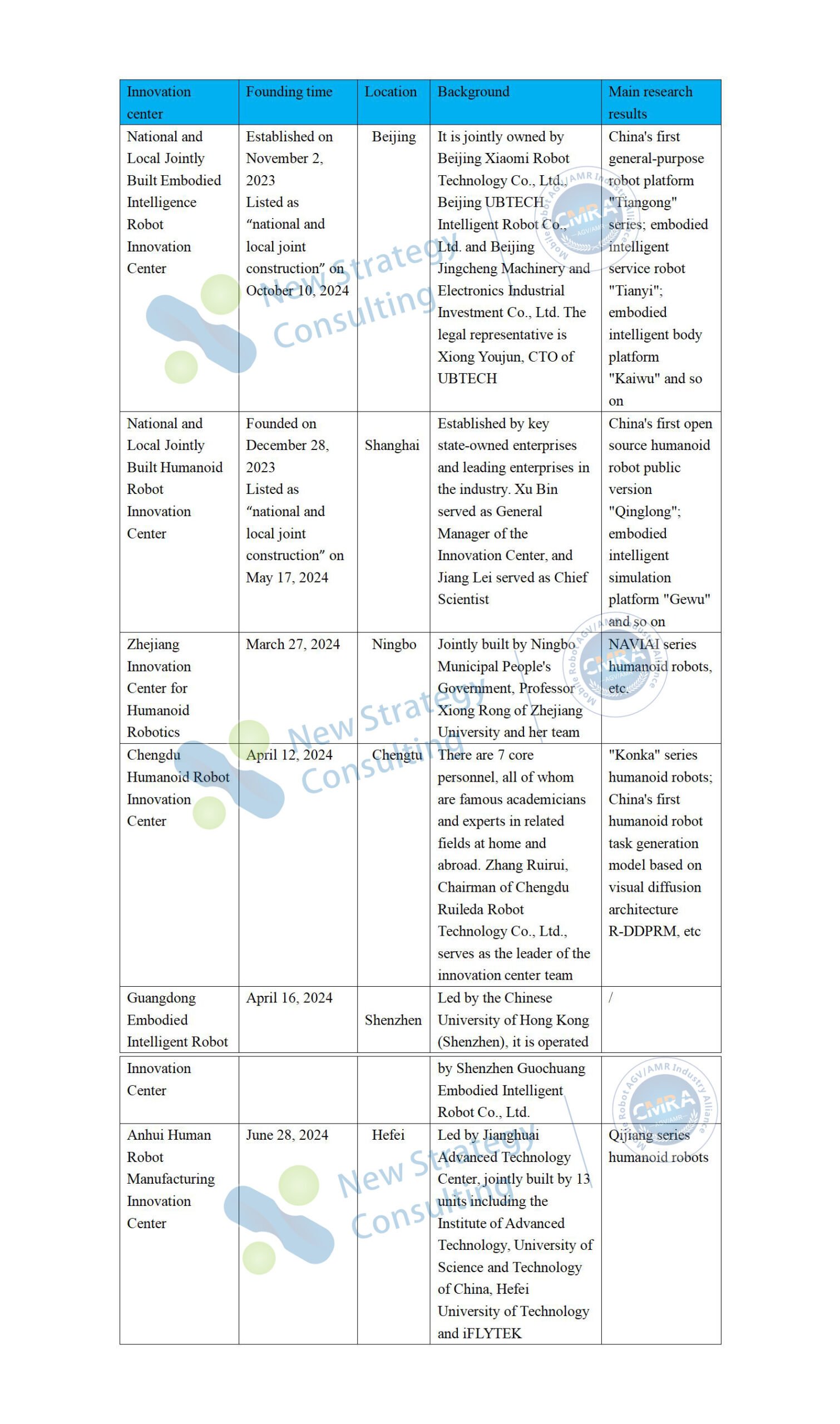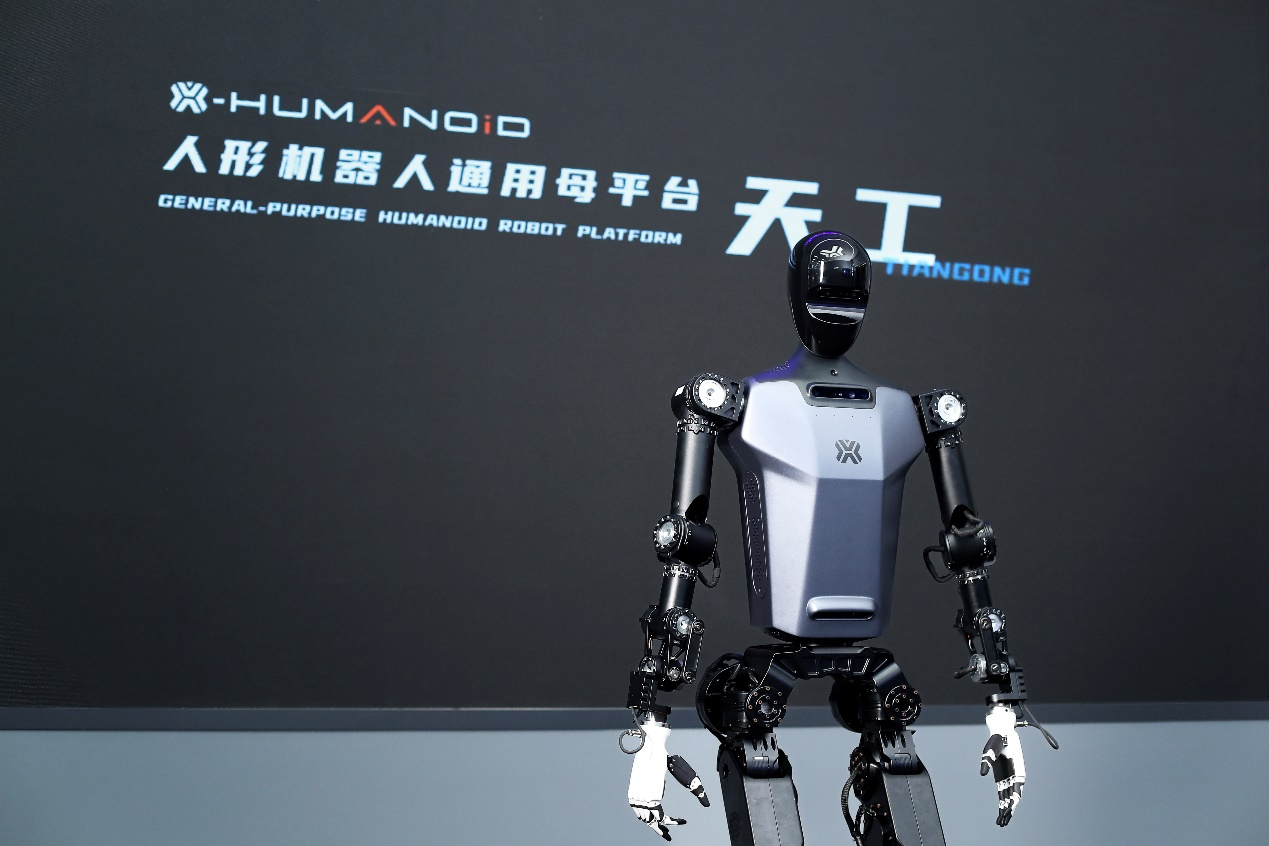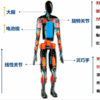Starting from the end of 2023, with the accelerated surge of the embodied intelligence wave, a nationwide upsurge of innovation center construction with humanoid robots as the core has been set off.
Whether it is policy-driven or market-driven, local governments and industrial capital have responded quickly. Beijing, Shanghai, Zhejiang, Sichuan, Guangdong, Anhui and other places have taken the lead in launching the layout of humanoid robot innovation centers, laboratories, and industrial parks, hoping to gain a first-mover advantage in this strategic emerging field.
A year later, how have these innovation centers developed? Have they really promoted humanoid robots from concept to application? This article will focus on the six major representative innovation centers in China and review their latest developments and research results.

Six major humanoid robot innovation centers in China (organized based on public information on the Internet, please make a correction if there are any incomplete points)
Beijing Humanoid Robot Innovation Center (National and Local Jointly Built Embodied Intelligence Robot Innovation Center)
Established in November 2023, it is China’s first provincial humanoid robot innovation center, jointly established by Xiaomi Robotics, UBTECH, Jingcheng Machinery and Electronics, Institute of Automation Chinese Academy of Sciences and other companies. On October 10, 2024, it was listed as the “National and Local Jointly Built Embodied Intelligence Robot Innovation Center”. Beijing Humanoid Robot Innovation Center has achieved the following representative results in promoting the breakthrough of autonomous technology and ecological system construction of humanoid robots in China:
General Robot Platform “Tiangong” Series
The “Tiangong” developed by the Center is the world’s first full-size pure electric drive anthropomorphic running humanoid robot, with a measured running speed of 12 kilometers per hour, and can stably adapt to various types of complex terrain. Its key information such as structural design documents, software development interfaces, URDF models, etc. have been fully opened, becoming the core hardware platform for secondary development and scenario verification by industry-university-research institutions. At present, hundreds of institutions have carried out secondary development based on “Tiangong”. Peking University, Huazhong University of Science and Technology and other universities have jointly built joint laboratories with the Center to promote the transformation of basic research into actual products.

General Embodied Intelligence Platform “Huisi Kaiwu”
The Innovation Center has released the universal embodied intelligence platform “Huisi Kaiwu”, which consists of a task planning “brain” driven by a large AI model and a data-driven skill execution “cerebellum”, realizing the full process intelligence from task understanding to execution, and significantly improving the autonomous decision-making and execution capabilities of humanoid robots in complex environments.
Dataset and Benchmark “RoboMIND”
The Innovation Center and Peking University have jointly launched a large-scale multi-configuration intelligent robot dataset and Benchmark “RoboMIND”. So far, RoboMIND has been downloaded more than 15,000 times on the official website of the Beijing Humanoid Robot Innovation Center, the HuggingFace platform, and the Beijing Artificial Intelligence Public Computing Platform. The dataset has been promoted and used in domestic and foreign universities and enterprises such as Tsinghua University, the University of Hong Kong, the University of Pennsylvania, and SenseTime, with a total of more than 15,000 downloads, and has won many authoritative awards at home and abroad.

Shanghai Humanoid Robot Innovation Center (National and Local Jointly Built Humanoid Robot Innovation Center)
In December 2023, Humanoid Robot (Shanghai) Co., Ltd. and Shanghai Humanoid Robot Manufacturing Innovation Center, a new R&D institution jointly established by state-owned backbone enterprises and industry leading enterprises, was officially established with a registered capital of 1 billion yuan; Xu Bin served as the General Manager of the Innovation Center and Jiang Lei as the Chief Scientist. In May 2024, the Center was jointly awarded as the “National and Local Jointly Built Humanoid Robot Innovation Center” by the Ministry of Industry and Information Technology and the Shanghai Municipal Government. The main achievements include:
Full-size Open Source General Humanoid Robot “Qinglong”
“Qinglong” is the first full-size open source general humanoid robot public version in China. It is 185 cm tall and weighs 80 kg. It has 43 active degrees of freedom, a maximum joint peak torque of 400 N·m, and a computing power support of 400TOPs. The robot has a highly bionic trunk configuration and anthropomorphic motion control, supporting multi-modal maneuvers, perception, interaction and manipulation. Relying on the “Suzaku” embodied brain and “Xuanwu” cerebellum model, it can flexibly control the body to accurately understand instructions and tasks and complete complex tasks autonomously.

“Gewu” Embodied Intelligent Simulation Platform
The “Gewu” embodied intelligent simulation platform is built on the Unity RL Playground reinforcement learning framework, supporting full-process automation from simulation training to real hardware deployment. The platform integrates advanced reinforcement learning frameworks and multimodal motion control technology, and is committed to providing one-stop robot development and testing solutions for scientific research institutions, universities and enterprises, and promoting humanoid robot technology from the laboratory to industrialization. At present, the “Gewu” embodied intelligent simulation platform has been applied to the development of multiple robot prototypes.
7B Longyue Big Model (MindLoongGPT)
The Longyue MindLoongGPT big model developed by the National and Local Jointly Built Center and the School of Information Science and Technology, FUDAN takes “natural language drive” as the core and builds a complete closed loop from multimodal input to high-fidelity action generation. MindLoongGPT supports multi-modal input such as text, voice, and image. Users only need to say “wave” or upload a reference video, and the model can automatically parse the semantics and generate coherent actions.
Chengdu Humanoid Robot Innovation Center
On April 12, 2024, Chengdu Humanoid Robot Innovation Center Co., Ltd. was officially established, marking the official landing of the first new research and development institution of humanoid robots in the central and western regions. Zhang Ruirui, Chairman of Chengdu Ruileda Robot Technology Co., Ltd., serves as the team leader of the Innovation Center. The Innovation Center will focus on the core technology of humanoid robots and will build a public platform, including a concept verification center, a pilot maturation platform, and a cross-innovation platform. The main achievements include:
“Konka” series robots
“Konka-1”, first launched on October 28, 2024, is the first ultra-lightweight humanoid robot product in China and the third one in the world. The body weighs 25 kg and has a maximum load of 5.5 kg. It can quickly understand the mission intention, autonomously observe the environment, reason about the mission process, generate the mission process, autonomously control the limbs and accurately complete the task.

Humanoid Robot Task Generation Model R-DDPRM
On June 24, 2024, China’s first humanoid robot task generation model R-DDPRM based on visual diffusion architecture was released. This model allows robots to generalize across multiple constraints, and has multi-factor global planning thinking ability. It has absolute advantages in task execution success rate, decision-making agility, computing power dependence, and ability to handle complex scene tasks. It greatly improves the task execution ability and efficiency of humanoid robots and reduces computing power and energy consumption costs.
Autonomous Cross-space Humanoid Robot Task Planning Reasoning Execution System
On March 8, Chengdu Humanoid Robot Innovation Center achieved a new phased result. The country’s first autonomous cross-space humanoid robot task planning reasoning execution system that does not require human intervention or remote control was officially unveiled. The system is based on the 3DSGs technical path, and uses Konka robots to achieve long-view reasoning planning and autonomous learning cross-scene task execution, allowing humanoid robots to autonomously plan action paths, reason in real time, understand spatial logic, and predict environmental changes.
Guangdong Embodied Intelligent Robot Innovation Center
In April 2024, Guangdong Embodied Intelligent Robot Innovation Center was officially launched. The center was located in Nanshan District, Shenzhen, led by the Chinese University of Hong Kong (Shenzhen) and operated by Shenzhen Guochuang Embodied Intelligent Robot Co., Ltd. The Innovation Center will focus on the innovative development of humanoid robots and embodied intelligence in special, medical, power, manufacturing, service robots and other industries. The Innovation Center aims to gather academic, research and industrial resources in the field of artificial intelligence and robotics in Guangdong Province, integrate core resources such as computing power, talents, and data through scientific industry guidance, form a joint force for the coordinated development of upstream and downstream of the industrial chain, build an industrial service platform, and promote the formation of an autonomous and controllable embodied intelligent robot industry cluster, and promote the continuous innovation of artificial intelligence and robots in the fields of medical health, talent education, urban management, special industries, etc.
Anhui Humanoid Robot Industry Innovation Center
Anhui Humanoid Robot Industry Innovation Center is an industrial innovation platform led by the Jianghuai Advanced Technology Center and jointly built by 13 units including the Institute of Advanced Technology, University of Science and Technology of China, Hefei University of Technology, iFlytek, and NIO Automotive Technology (Anhui) Co., Ltd. This platform aims to integrate research, design, evaluation and market, form industrialization capabilities, and then promote the research, development, production and application of humanoid robots in Anhui Province. The main achievements include:
“Qijiang” series humanoid robots
The “Qijiang” series humanoid robots are developed by Jianghuai Advanced Technology Center. The “Qijiang No. 1” humanoid robot was unveiled on July 19, 2024. It is 1.7 meters tall, weighs 55 kilograms, has 36 degrees of freedom in the whole body, is equipped with a variety of sensors, and has a battery life of more than 1 hour.
The “Qijiang No. 2” humanoid robot was released in September 2024. It is 1.8 meters tall, weighs 60 kilograms, has 38 degrees of freedom in the whole body, and adopts an anthropomorphic design with forward-flexed legs. Compared with “Qijiang No. 1”, the performance of intelligent brain, agile cerebellum and strong limbs has been improved. Based on the embodied hierarchical framework, it realizes autonomous decision-making and multimodal interaction. Through the self-developed embodied motion controller, it realizes agile control of the body, and improves the ability to move in unstructured environments and the ability to manipulate objects delicately.

Zhejiang Innovation Center for Humanoid Robotics
Zhejiang Innovation Center for Humanoid Robotics is jointly built by the Ningbo Municipal People’s Government and Professor Xiong Rong’s team from the Institute of Intelligent Systems and Control, Zhejiang University. With the goal of building a major high-level innovation platform, it focuses on the research of humanoid robot intelligent sensing and control technology and the development of the whole machine system, and strives to create a comprehensive innovation platform integrating humanoid robot technology research and development, achievement transformation, talent training and industrial development, and industrial radiation. The main achievements include:
“NAVIAI” series humanoid robots
“NAVIAI-i1” was released in March 2024. It is 1.5 meters tall and weighs 50 kilograms. With the technical support of AI large models, computing power, sensors, control systems, etc., it can complete simple actions such as wiping tables and pouring tea. “NAVIAI-i2” was released on August 17, 2024, weighing 60 kg, 1.65 meters tall, and with an AI computing power of 275Tops. It has broken through multiple technologies, achieved coordinated and stable walking of the whole body and general high-precision intelligent operation, can anthropomorphize the whole body coordinated movement, the fastest speed is greater than or equal to 6km/h, adapts to a variety of ground, has multi-modal perception capabilities, and can carry out embodied intelligent operations.

Currently, the factories where “NAVIAI-i2” has entered the training include Lenovo Southern Intelligent Manufacturing Base (Lenovo AI Factory) and Geely Automobile Factory. In addition, Zhejiang Innovation Center for Humanoid Robotics has also reached cooperation with companies such as HAOSEN and Transfar Group, and will carry out factory training of humanoid robots in the clothing, auto parts and home appliance industries.
Note:
Logistics Automation Development Strategy & the 7th International Mobile Robot Integration Application Conference Southeast Asia will be held in Concorde Hotel Kuala Lumpur, Malaysia on 21st August 2025. Welcome to join us.
For agenda, please click https://cnmra.com/logistics-automation-development-strategy-the-7th-international-mobile-robot-integration-application-conference-southeast-asia-21st-august-2025-concorde-hotel-kuala-lumpur-malaysia/
For registration, please click https://docs.google.com/forms/d/e/1FAIpQLSdGHjpHRU0mR0_2ZlqtJpUV25s3XlIIHtkkUUfxz0W6vpBqiA/viewform?usp=header





